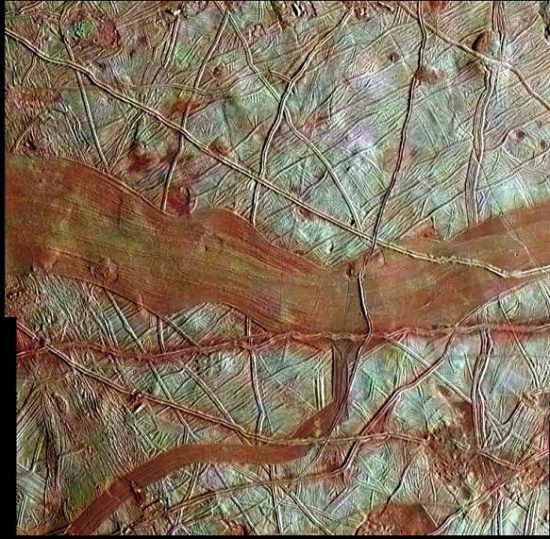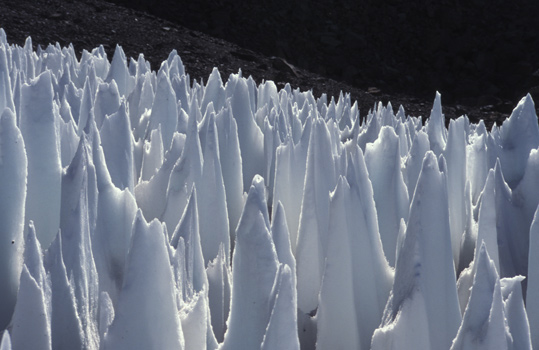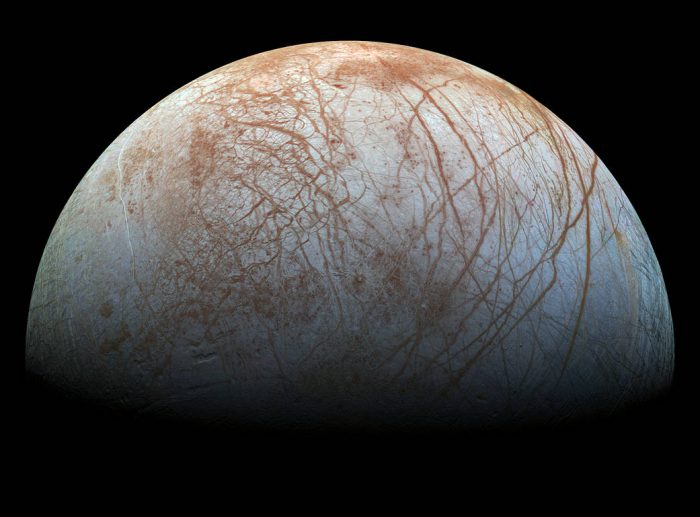In the search of extraterrestrial life, two of the most promising—and nearest—targets are a pair of gas giant moons. Saturn's Enceladus and Jupiter's Europa. Why makes these two such charmers?
Water, what else?
You see, both of these moons have shown evidence of having underground oceans. And unlike the possible buried Martian lake discovered a while back, these oceans would be absolutely enormous. Perhaps rivaling the amount of salt water in the largest oceans on Earth. Wow! What are we waiting for?

These images of Europa's surface offer amazing details ... but leave plenty of mystery as well. (NASA/JPL-Caltech/SETI Institute)
Well, in the case of Europa, a new study out of Cardiff University is suggesting that the moon's welcome would be a bit frosty. And pointy.
Spiky surface
How so? To answer that, here's your new word of the day: Penitentes (say pehn-eh-TEHN-teez).
This is basically a type of ice spike that forms at dry, cold, and high altitudes. We actually have them on Earth. Here they are in a high plateau in South America.

On second thought, let's NOT land here. (Wikimedia Commons)
These frozen formations grow in rows, looking kind of like some sort of barrier around a medieval fortress. Which is essentially what they would be if you ever tried to, say, land a space probe on them.
Oh, here's the other thing. Those penitents that you see up there? They're around a couple metres or six feet high. That seems pretty tall ... until you realize that the ones on Europa are estimated to be around eight times that height. Like five-storey building tall.
Oh dear!
Clipper to confirm

An image of what the Clipper might look like above Europa. (NASA/JPL-Caltech)
If this report is accurate, our chances of landing on Europa and drilling under its ice cap into the ocean below just got a lot slimmer. Fortunately, we don't need to just take all of this on faith.
NASA will launch the Europa Clipper probe some time between 2022 and 2025. This spacecraft's mission will be to inspect the moon up close and examine plumes of gas that are shooting up from the moon's surface for signs of possible life. And, of course, it will also be able to take photos that should help settle once and for all whether the surface of Europa is a chrome dome or a field of spiky ice towers. Fingers crossed!
 What's that surface really like? We'll have to wait and see... (NASA/JPL-Caltech/SETI Institute)
What's that surface really like? We'll have to wait and see... (NASA/JPL-Caltech/SETI Institute)









